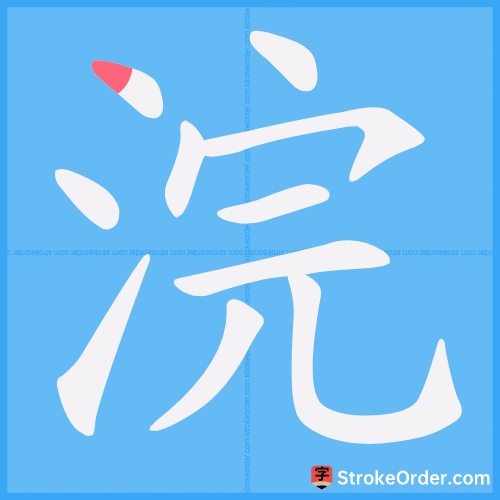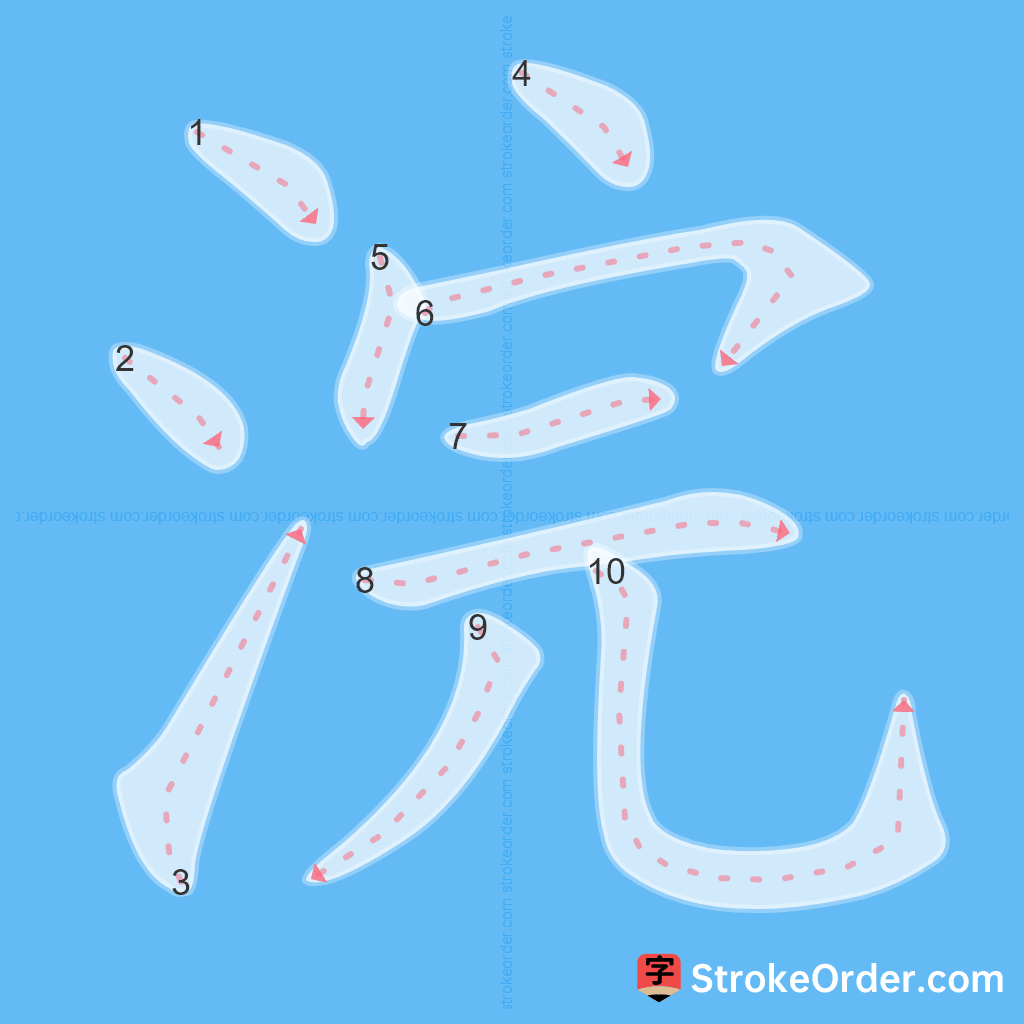浣 Stroke Order
Animated Stroke Order of 浣

Stroke Order Diagrams for 浣

Step-by-Step Handwriting Guide for 浣

Learn to Write Chinese Characters with Video Tutorials
Watch the video of writing the Chinese character "浣", learn the correct stroke order (笔顺) of the character "浣", and master the standard way of writing the character "浣".
Free Printable Handwriting Practice with Stroke Order: 浣
Printable Writing Practice Worksheet of "浣" in Portrait Orientation (Tian Zi Ge)

Printable Writing Practice Worksheet of "浣" in Landscape Orientation (Tian Zi Ge)

Information of 浣
Pinyin
huàn
Radical
氵
Strokes
10 strokes
Usage
★★★★
Definition
to wash / to rinse / 10 day period in the month (during Tang dynasty)
浣
huàn
1. Wash.
- Example: 洗衣 (wash clothes), 浣纱 (wash silk), 浣雪 (wash away the sin), 浣濯 (clean).
2. In the Tang Dynasty, officials rested and bathed once every ten days, dividing the month into 上浣 (first ten days), 中浣 (middle ten days), 下浣 (last ten days), which later referred to the three ten-day divisions of a month.
--------------------------------
浣
huàn
1. Wash (the same meaning).
2. To wash or eliminate.
- Example: 《说文》: 浣,濯衣垢也 (to wash and clean clothes).
- Example: 王维《山居秋暝》: 竹喧归浣女,莲动下渔舟 (Bamboo rustles as the washerwoman returns; the lotus stirs the fishing boat below).
3. To wash away or cleanse.
- Example: 《史记·扁鹊仓公列传》: 湔浣肠胃 (to cleanse the intestines).
- Example: 浣雪 (to wash away the accusation).
--------------------------------
浣
huàn
Definition in the Tang Dynasty context: Officials had a rest and bathing day every ten days, and the month was divided into 上浣, 中浣, 下浣. Later, this term also referred to the three ten-day divisions of a month.
--------------------------------
(Description from Traditional Dictionary)
1. To wash and cleanse. "浣,濯也" as found in "广韵".
- Example: 唐·王维《洛陽女兒行》: "Who cherishes the Yuè woman with a face like jade, Poor at the riverbank, she self-cleans her silk."
2. To eliminate or cleanse.
- Example: 唐·马载《岐阳逢曲阳故人话旧》: “Accumulated sorrow, how to send away? Full cup to wash away longing.”
3. Tang Dynasty context: Officials had a rest and bathing day every ten days, dividing the month into 上浣, 中浣, and 下浣, which later became terms for the first, middle, and last ten days of the month.
--------------------------------
(Another note from Traditional Dictionary)
- This character is pronounced as **huàn** in another context.
Input Method for 浣
Pinyin
huan4
Wubi
ipfq
Cangjie
ejmu
Zhengma
vwbr
Four Corner
33112
Unicode
U+6d63
Same Pronunciation Characters